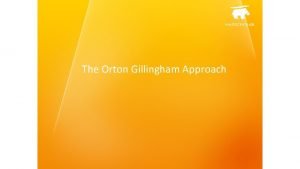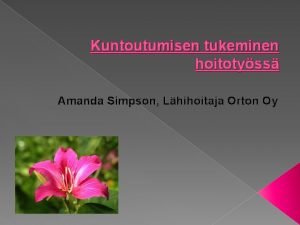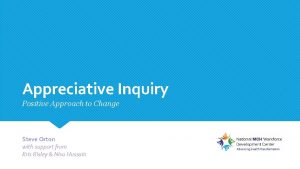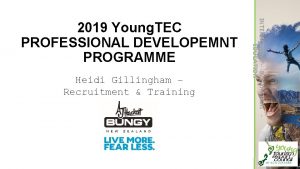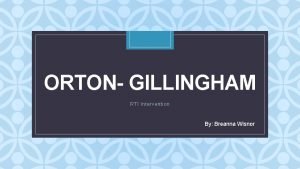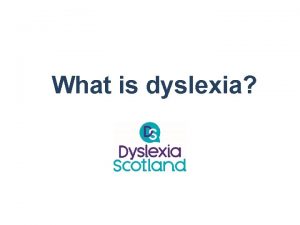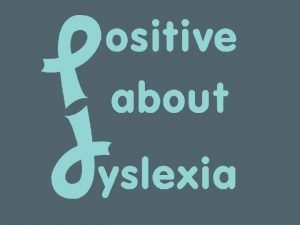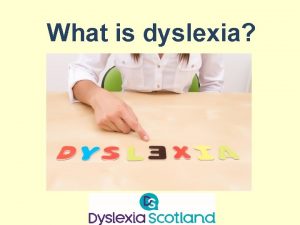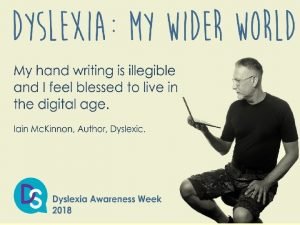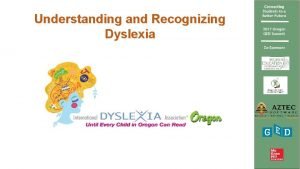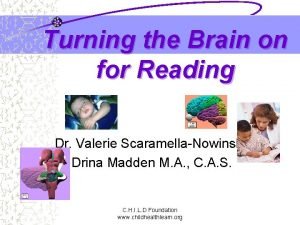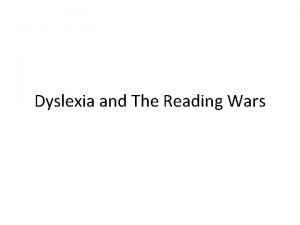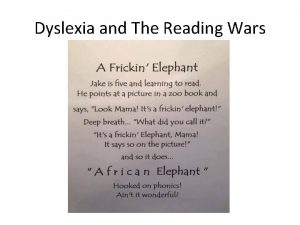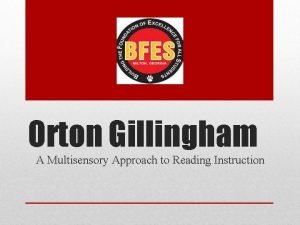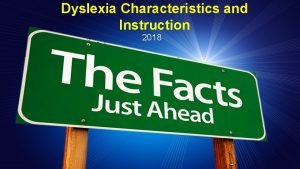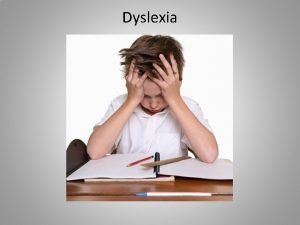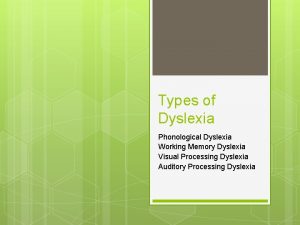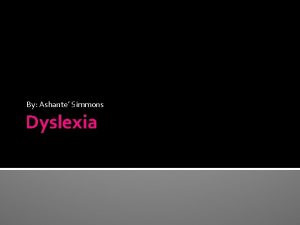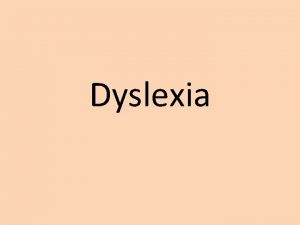Dyslexia and The Reading Wars Orton Gillingham International














- Slides: 14

Dyslexia and The Reading Wars

Orton Gillingham International Dyslexia Association Samuel Gillingham • 1920 - pioneered studies in reading research & multisensory teaching June Lyday Orton In 1949 after Samuel’s death Judy formalized the Orton Society to train teaches 7 publish instructional materials

Chomsky & Goodwin Whole Language 1970 s • Whole language approach to phonics grew out of Noam Chomsky's ideas about language acquisition Ken Goodwin – father of whole language movement university of Arizona Wrote” What's Whole in Whole Language”

Whole language in contrast to phonics Whole-language theory holds that learning to read and write English is analogous to learning to speak it —a natural, unconscious process best fostered by unstructured immersion. Whole language is a philosophy of reading instruction. Here the emphasis is on constructing meaning through the written word and then expressing the meaning through writing. Advocates of whole language state that learning to read through phonics alone results simply in word recognition – meaning is left to chance. Does whole language work? Students who thrive in a whole language environment are global learners meaning they learn best through hands-on learning and interacting with peers. They tend to be tactile and visual learners. • If student see an unknown word they are encouraged to use context clues, pictures, and past knowledge and “ guess” what the world should be. • Most whole language endorsers. Piagetian researcher, Emilia Ferreiro &, Maryann Manning research and advocate invented spelling s another "whole-part-whole" approach: children learn to read by writing in a meaningful context, e. g. by writing letters to others.

Reading Wars • Reading Wars" of the 1980 s and 1990 s between advocates of phonics and those of Whole Language methodology whole language. • 2005 the Australian Government endorsed the teaching of synthetic phonics, and discredited the whole language approach.

Reading Recovery • Developed by New Zealand researcher Marie Clay • • A short term reading intervention for first graders. Daily, one-on-one, 30 -minute lessons taught by a trained Reading Recovery teacher • All Reading Recovery students improve their reading and writing skills, and approximately 75% reach their grade level within 20 weeks • Reading Recovery is proven to work with English Language Learners • The majority of Reading Recovery children sustain their learning gains over time • By intervening early, Reading Recovery reduces referrals and placements in special education, limits retention, and has lasting effects • The long-term benefits of literacy achievement outweigh the short-term cost of instruction and teacher preparation 1926 -2007

Sally & Bennet Shaywitz

Brain Imaging

Reading Intevention

Coined the term Balanced Literacy George Michael Pressley 1951 -2006 • Was a proponent of phonics. • Was author of the Open Court Reading Series • He supported the explicit teaching of decoding, but believed the Whole Language advocates were right when it came to motivation. And getting kids interested in reading.

Balanced Literacy coined by Michael Pressley • • • Key Components of Balanced Literacy Create a genuine appreciation for literature Teaches: phonics – – – Grammar skills Reading and comprehension strategies Writing forms and skills Direct and indirect reading instruction Must provide opportunities for shared and independent reading • • • Modeled reading (reading aloud) Writing – Modeled (interactive Writing) Shared Writing Guided Writing (Writing workshop) Independent Writing Word Study

Lousia Moats Balanced Literacy Moats argues that the foci on quality literature, diversity, reading groups, and motivation are not the sole property of whole language. Moats contends that the properties essential to Whole Language, and those that render it ineffective and unfit for reading education are the principles that children – learn to read from exposure to print, – the hostility to drilling in phonics and other forms of direct instruction, – tendency to endorse the use of context-clues and guess-work to decipher a word rather than phonemic decoding. • In these and certain other tenets lie the essence and the error of Whole Language. • Emphases on cultural diversity and quality literature is neither limited to Whole Language nor fundamental to it.

NCLB-2002 Requires research based interventions Provided federal funds to states / district's to establish reading programs • Included a legal definition of reading: Reading is a complex system of deriving meaning from print that requires all of the following: The skills and knowledge to understand how phonemes, or speech sounds, are connected to print The ability to decode unfamiliar words The ability to read fluency Sufficient background information and vocabulary to foster reading comprehension The development and maintenance of a motivation to read

References Ken Goodman http: //www. u. arizona. edu/~kgoodman/ken. html Marshal, A. (2003) Brain scans show dyslexics read better with alternative strategies. Retrieved from: http: //www. dyslexia. com/science/ different_pathways. htm Moats, L (2016) Children of the Code Retreived from: http: // www. childrenofthecode. org/interviews/moats. htm Nichols, J. (2009). Pendulum swing in reading instruction. In. Sight: River Academic Journal. Retreived from https: //www. rivier. edu/journal/roaj-spring-2009/j 257 nichols. pdf Shanahan on Literacy, (2014, October 31) Balanced Literacyhttp: // www. shanahanonliteracy. com/search/label/Balanced%20 Literacy
 Orton gillingham international
Orton gillingham international Orton gillingham manipulatives
Orton gillingham manipulatives Rabbit words orton-gillingham
Rabbit words orton-gillingham Orton kipuklinikka
Orton kipuklinikka Steve orton
Steve orton Pre reading while reading and post reading activities
Pre reading while reading and post reading activities Heidi gillingham
Heidi gillingham Heidi gillingham
Heidi gillingham Simon gillingham
Simon gillingham How many people have dislexia
How many people have dislexia Dyslexia
Dyslexia What is dyslexia
What is dyslexia Say the color not the word
Say the color not the word Ida definition of dyslexia
Ida definition of dyslexia Dysphonetic
Dysphonetic

